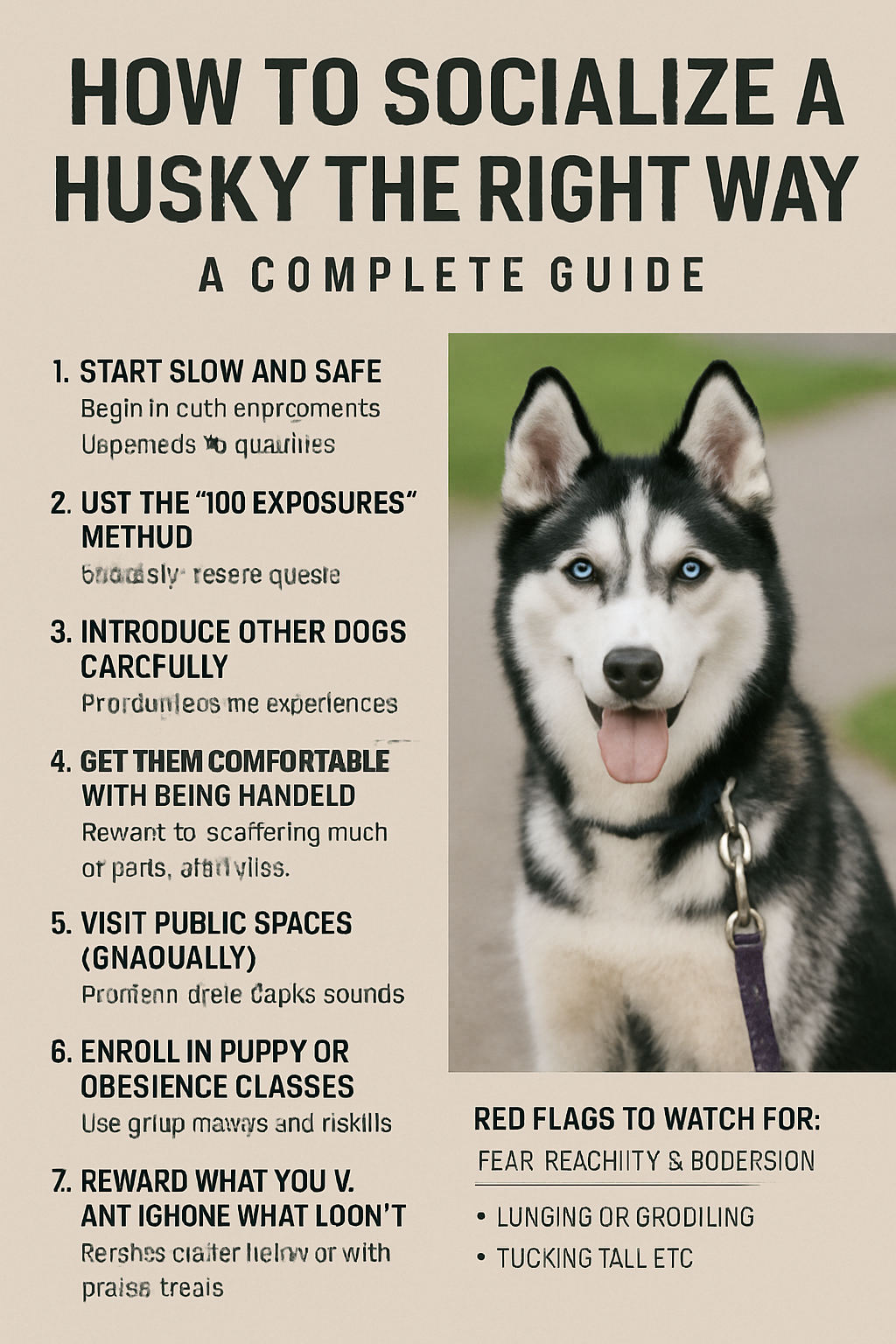A Siberian Husky are outgoing naturally also curious—that’s true, it’s also true they ain’t always good with other dogs, human, or new surroundings. Like any breed, proper socialization be need’s for huskies to turn into confidant, stable, and well-behaved companions.
Meeting dogs at the park aint socialization, not by a longshot. Creating positive link with the world, sound, odors, things, human people, other beasts, and even kinda wild environment’s is what it really is all about. The earlier and much more steady you do socialize your Husky, is just the better their lifetime behavior becomes.
We will investigate how to properly socialize your Husky, doesn’t matter if you got a pup, or a rescued adult, it’s gonna be usefull.
Why Socialization Be Essential for Huskies, is because they is pack animals and have strong instincts along with sharp personalities.
Without ever seeing the world at important developmental times, your dog might become:
Fearful, perhaps anxious
Might be overly reactive or aggresive, even
Becoming shy or defensive around strangers seems a likely result.
Public outings may prove very stubborn or unmanageable
Prone, maybe, to acting out destructively from stress or pressure.
A well-socialized Husky will usually be:
Confident and comfy in all new situations.
Much easier training in the public eye
Generally friendlier to others, doggos and folk.
Overall? Happier, calmer and, more balanced.
The Right Time For Socializing
Honestly, the best moment to kick off socialization, is between ages 3 and 16 weeks for your Husky pal. Puppies are receptive then, ready for anything new, less inclined toward feeling scared or afraid.
Still, its not ever too late.
With grownup dogs? Yeah, it takes more time, plus patience, of course, but all of this follows the same guiding ideas.
Start Simple, Stay Safe First
It ain’t about overwhelming, is it? Gentleness is the only way.
Begin with things like:
Calm streets, try to
Dog friends who’re grown-ups.
Good humons
Those in your family.
Some indoor controlled enviroments.
Use treats – treats really, really delicious, good ones, to build those good connections with sights, sounds, and anyone new.
Do this in the “100 Exposures” plan!
Try expose your Husky to one hundred different things in just weeks of training.
Here it goes:
Incorporate various peeps, like by age, sex and what they’re wearing.
Other pooches need to be friendly and easygoing.
Cars, bikes and also strollers are needed
Include crates, gates, and steps too.
Use a variety of surfaces such as tile, grass, and maybe some gravel.
Also, add things like vacuum cleaners, blenders, and even doorbells.
Introduce loud noises. fireworks, sirens, maybe thunder, but with care.
Praise ’em, give treats or even play with them if they stay chill.
Step 3 is introducing the pals carefully
Some dog meetings? can be bad and might set you Husky back.
Good idea:
Meet in a spot that’s not yours.
First leashes, then lose it, if both dogs seem cool.
No face-to-face stuff; walk ’em side by side first.
Look at their posture: wagging tail means good, if stiff, then pause.
Break it up fast if play get’s a bit wild.
Never ever unleash your Husky in the park till recall is perfect.
Step 4 – Handling is important
This helps at the vet or groomers, plus friends too.
Gently touch, then give reward while doing it:
Paws.
Ears.
Mouth.
Tail.
Collar.
Calm reactions desrve rewards. Slow down with those that didn’t had the best life, ya know?
Step 5: Visit Public Spaces (Slowly)
After your Husky settles, then ramp it up slowly!
Try dog-friendly stores.
Amble throuh bustling neighbourhoods
Sit and chill at a cafe patio
Also, short trips to new parks in your car
Every outing’s a lesson ya know? Keep things brief and end well.
Step 6: Try Puppy or Obedience Classes
Group classes, helping your Husky do the following things:
Focus better despite stuff going on.
Get control over impulses.
Grow their self-assuredness.
Practice getting along with people, and other dogs.
Get proper structure, and boundaries
Pick good positive-reinforcement classes only. Steer clear trainers with harsh tactics –especially when ya got sensitive or stubborn dogs.
Step 7: Rewarding Good Stuff Ignore What’s Bad
Don’t by accident encourage bad behavior, understand? If your Husky barks, pulls, or acts up:
Just keep yer cool.
Redirect with something like “look at me,” or, “let’s go”
Go somewhere quieter if it’s needed.
Then, give a treat when they’re settled down and following you.
Never, punish when they’re scared! Just build trust, see?
Step 8: Socializing Your Husky – Forever!
Socialization… it ain’t a one time job. Even full grown Huskies needs this:
Regular fun playdates or walks
Exposure that’s positive, new faces, or new places
Quick refreshers on leash manners & greetings.
Keep rewarding calm, friendly attitudes, always
Signs That Scream “Watch Out”
When your Husky exhibits fear, overreacting, or bad temper, in social situations:
They might freeze
Maybe they’ll lunge, or even grumble.
A tucked tail, or crouching, yup
They’ll avoid, or straight up hide.
Snappin’ when touched? Careful now.
Stop the session. Dont press on. Get a pro if you need.
Last Words Socializing, Its A Learnin’ Process
Even the coolest Husky needs a helping hand. Socialization means buildin’ trust, exposing ’em, building their emotional strength–no forcing a dog to “tough it out”.
Start when their young. Go slow. Use good treats, be patient, be positive.
The result? A Husky fearless of the world – One calm interaction at a time.
